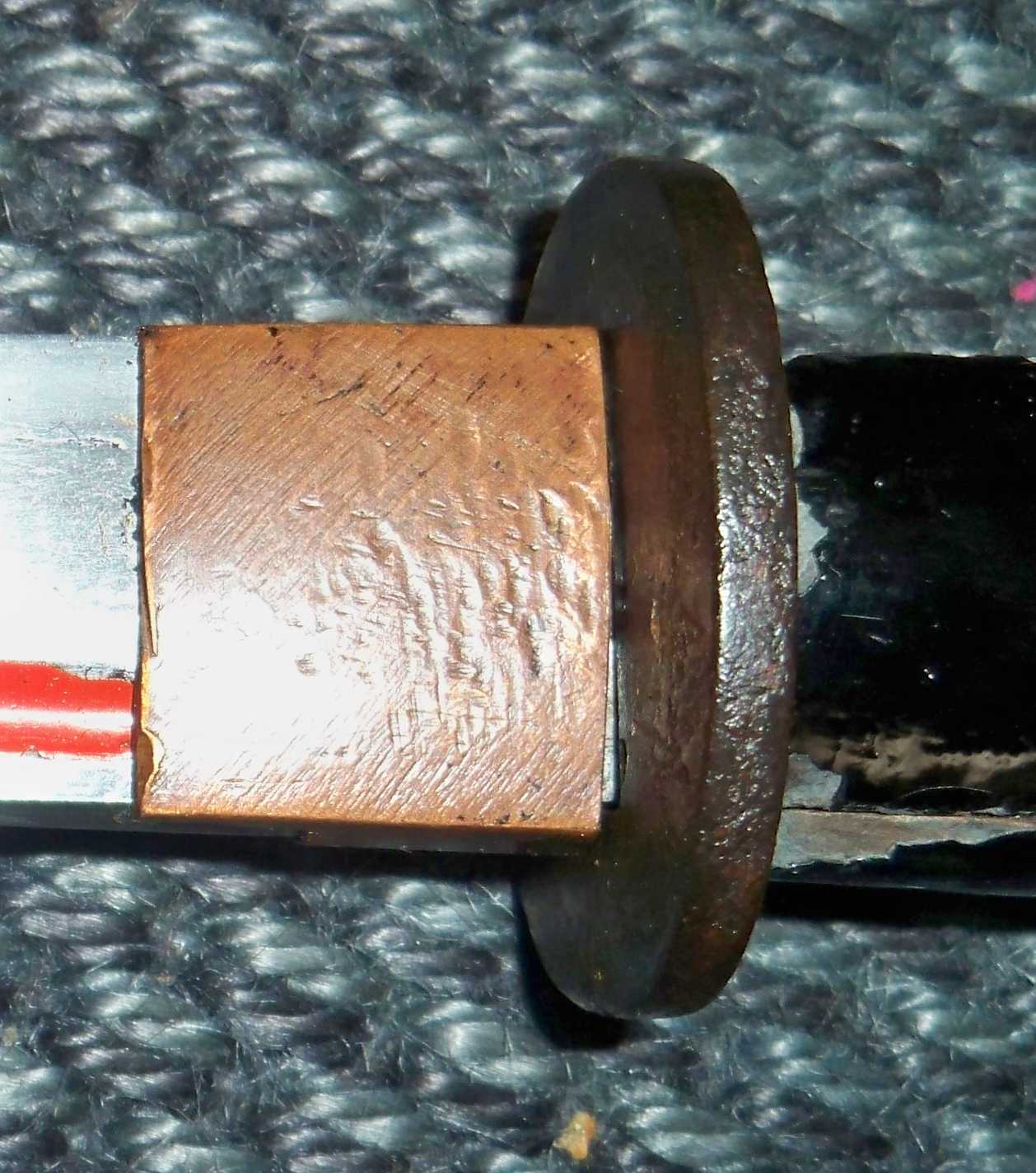Your Cart is Empty


If you look at examples of traditional Japanese swords, you'll probably notice that many of them have a ring around the base of the blade. As shown in the photo to the left, it's a relatively small component, typically measuring just 1 or 2 inches tall while fully wrapping around the blade itself. Upon seeing this piece of metal for the first time, many people assume that it's merely a decorative ornament. In feudal Japan, bladesmiths often added intricate decorations and ornaments to their swords, but this ring of metal actually had a functional purpose.
The Purpose of the Habaki
The ring of metal found at the base of traditional Japanese swords is called a "habaki." It's been used in traditional Japanese swords for centuries, with origins dating back to Japan's Kamakura Period. Historians generally concur that it served two purposes, one of which is to secure the handguard (tsuba) in place. To protect against accidental self-injury, bladesmiths included a tsuba on their swords. Also made of metal, the tsuba is a ring found between the sword's handle (tsuka) and the blade itself. Without the tsuba, a samurai warrior or martial arts practitioner could sustain injury if his or her hand slipped while wielding the sword. The tsuba prevented this from happening, however, by creating a barrier between the user's hand and the blade. And one of the functions of the habaki was to secure the tsuba in place so that it didn't fall off or slip upwards on the blade.
The other purpose of the habaki was to prevent the sword from falling out of the scabbard (saya). Most saya provided a tight, secure fit for the sword for which they were designed. With the habaki being slightly thicker than the blade, it allowed samurai warriors and martial arts practitioners to essentially wedge their sword inside their saya. When a samurai warrior or martial arts practitioner would draw their sword, they would generally grasp the tsuba with their thumb, pulling up with just enough force to unwedge the habaki from the saya.
The habaki wasn't a permanent component on traditional Japanese swords. Rather, samurai warriors and martial arts practitioners would have to remove it on a regular basis to inspect and clean it. About once every few months, the habaki would have to be removed from the sword. Once removed, the samurai warrior or martial arts practitioner would apply oil to inside and outside of the habaki, thereby protecting it from rust, corrosion and degradation.